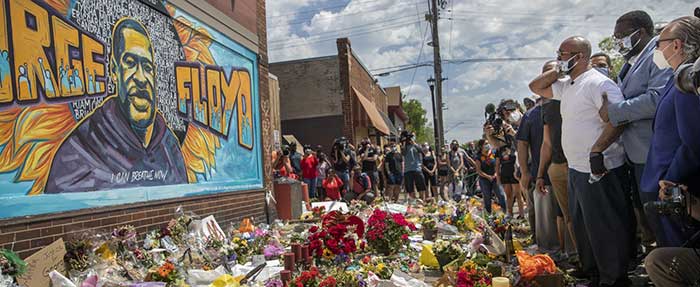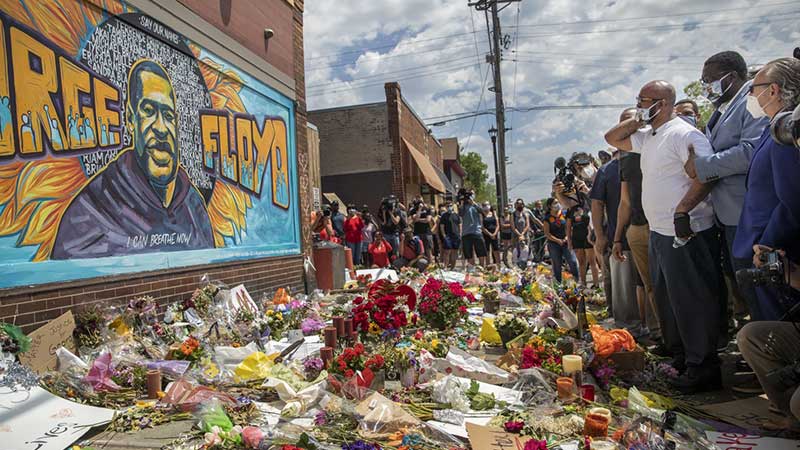
The killing of George Floyd at the hands of those sworn to protect and serve has awakened many Hoosiers to the fact that the racial discrimination we had hoped was a thing of the past still infects every facet of our society. We see it in policing and criminal justice, in a disproportionately high death rate from COVID-19 among African Americans, and in unemployment rates among people of color that have been exacerbated by the pandemic.
We also see it in higher education, nationally, and right here at home in Indiana.
The promise of American opportunity has always been in sharp contrast with our nation’s legacy of racial discrimination and oppression. We’re painfully aware that inequities persist for people of color, immigrants, and others. That’s why at Lumina Foundation—which advocates for more of Americans and state residents to get the education and training after high school necessary to succeed in a changing world—racial justice and equity are at the heart of our mission. They need to be the heart of Indiana’s mission, too.
In Indiana, a lack of access to quality learning after high school, complemented by real academic, financial and social supports, has denied Black, Hispanic, and Native American people opportunities to learn beyond high school, grow individually, and thrive economically.
While Indiana has made gains in recent years, the gaps in educational access and college degree or certificate attainment are stark. Seventy-nine percent of Asian students and 65 percent of white students in Indiana enroll in college within one year of graduating high school, while only 57 percent of Black and 53 percent of Hispanic students do. And while enrollment among people who are Hispanic has been basically flat since 2012, college enrollment among Black Hoosiers has actually decreased by 8 percentage points. As a state, we must do better.
Disparities among Hoosiers who earn college degrees and other post-high school credentials are even wider. Only 19 percent of Latinos and 28 percent of African Americans have earned a degree or certificate, in contrast to 38 percent of white students and 62 percent of Asian Americans.
The irony is that Indiana has introduced innovative policies that have spread across the nation. Examples include: the 21st Century Scholars program, which provides up to four years of tuition, guidance, and support for students from families with low incomes; competency-based programs such as the WGU Indiana model, a nonprofit, online university which expands access to higher education; as well as the state’s comprehensive need-based approach to financial aid.
Despite these efforts, growth in the numbers of people finishing college and the share of the population with credentials of value—especially among racial and ethnic groups experiencing unfair outcomes—remains anemic. Again, as a state, we need to do more.
Several states are making concerted efforts to attack inequity in their policies, budgets, and practices. Lumina is working with Colorado, Oregon, Tennessee, and Virginia to focus resources and policies towards achieving better outcomes for students of color. These states have agreed to increase attainment among students who are African American, Latino, and Native American by at least 5 percentage points during the next few years.
Last year, Lumina’s staff spent several months interviewing dozens of Indiana government, higher education, business, philanthropy, advocacy, and other local leaders about Indiana’s commitment to creating a talent development system with racial equity at its core. What we heard is that while Indiana has some people who champion the need for fairer outcomes, they are isolated and the state lacks a comprehensive coalition of actors and leaders who are committed to racial justice. Too frequently, we heard the “rising tide lifting all boats” refrain, or we heard that income or culture are to blame for disparate outcomes.
We heard little about how policies, beliefs, and practices create structural barriers that unfairly hold people back.
Indiana—across government, institutional actors, systems, and communities—needs a deeper level of awareness and commitment to actions that improve outcomes among fellow Hoosiers who are Black, Hispanic, and Native American. In this way, as a state, we can reach our fullest potential. We must prepare Hoosiers for the rapidly changing, technology-enabled world of human work that is transforming what work is as well as changing how we must learn so that we are capable of doing this work.
How do we make this happen? The list of strategies is lengthy, but here are some starting points. We must be explicit about antiracism in a world of racial injustice by improving higher education attainment among people of color. We can do this by allocating more state resources to college, universities, and workforce providers that serve large segments of the state’s Black, Hispanic, and Native American people and hold all recipients of these public funds accountable for achieving fair and just outcomes.
We can build on the excellent work the Indiana Commission for Higher Education has done to publish indicators of progress broken out by race and ethnicity, with a focus on eliminating disparities and increasing educational attainment. Policymakers should link reforms in K-12, which have been significant, and improvements in higher education to this platform for achieving racial equity. We must also insist that every public college and university develop an action plan for achieving better outcomes across populations of color. And we can better engage, highlight, and support those state and campus leaders willing to stand up as “racial equity champions.”
If there is a more urgent set of priorities, I can’t imagine it. Improving overall education levels among Black, Hispanic, and Native American Hoosiers—the populations Indiana and its higher learning institutions have poorly served, and who continue to face racial prejudice in nearly every aspect of their lives—is in our shared interest. It’s the key to the economic and social well-being not only among Hoosiers but for all Americans.
This is not something we need to debate further. The time to lead on racial justice is now, in this place we call our Indiana home.
Jamie Merisotis is president of Lumina Foundation, an independent private foundation in Indianapolis that is committed to making opportunities for learning beyond high school available to all. He also is author of HUMAN WORK IN THE AGE OF SMART MACHINES, which will be published in October.
